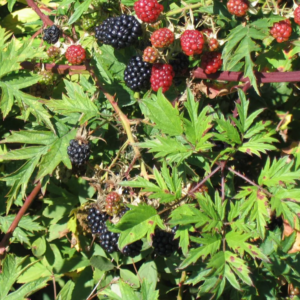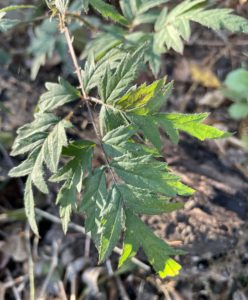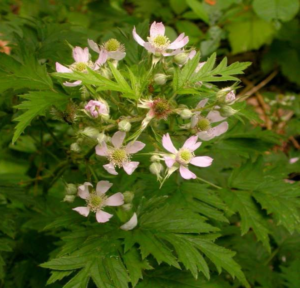Edible Nature in Seattle: Evergreen Blackberry Edition

Scientific name: Rubus laciniatus.
General info: Evergreen blackberry most closely resembles Himalayan blackberry (Rubus armeniacus), aside from its cut-leaf shape. Evergreen blackberry belongs to the Rose family, it produces edible berries that are best harvested in late Summer – July to August. It is a thorny, thicket forming shrub that can grow 13 feet tall. Similar to Himalayan blackberry, it forms large woody root balls that can make it difficult for removal.
Evergreen blackberry was introduced for its fast-paced fruit production; making it a European species. As described above, Evergreen blackberry is a highly invasive species and it is often difficult to remove due to its large, deep root balls. Often times efforts have to be repeated if the entirety of the root ball is not dug out.

Stem: Evergreen blackberry can grow as tall as 13 feet. Like its more familiar cousin, the stems are stiff, ridged, and thorny.

Written by Katie Stickell, DNDA Urban Forest Restoration Intern
